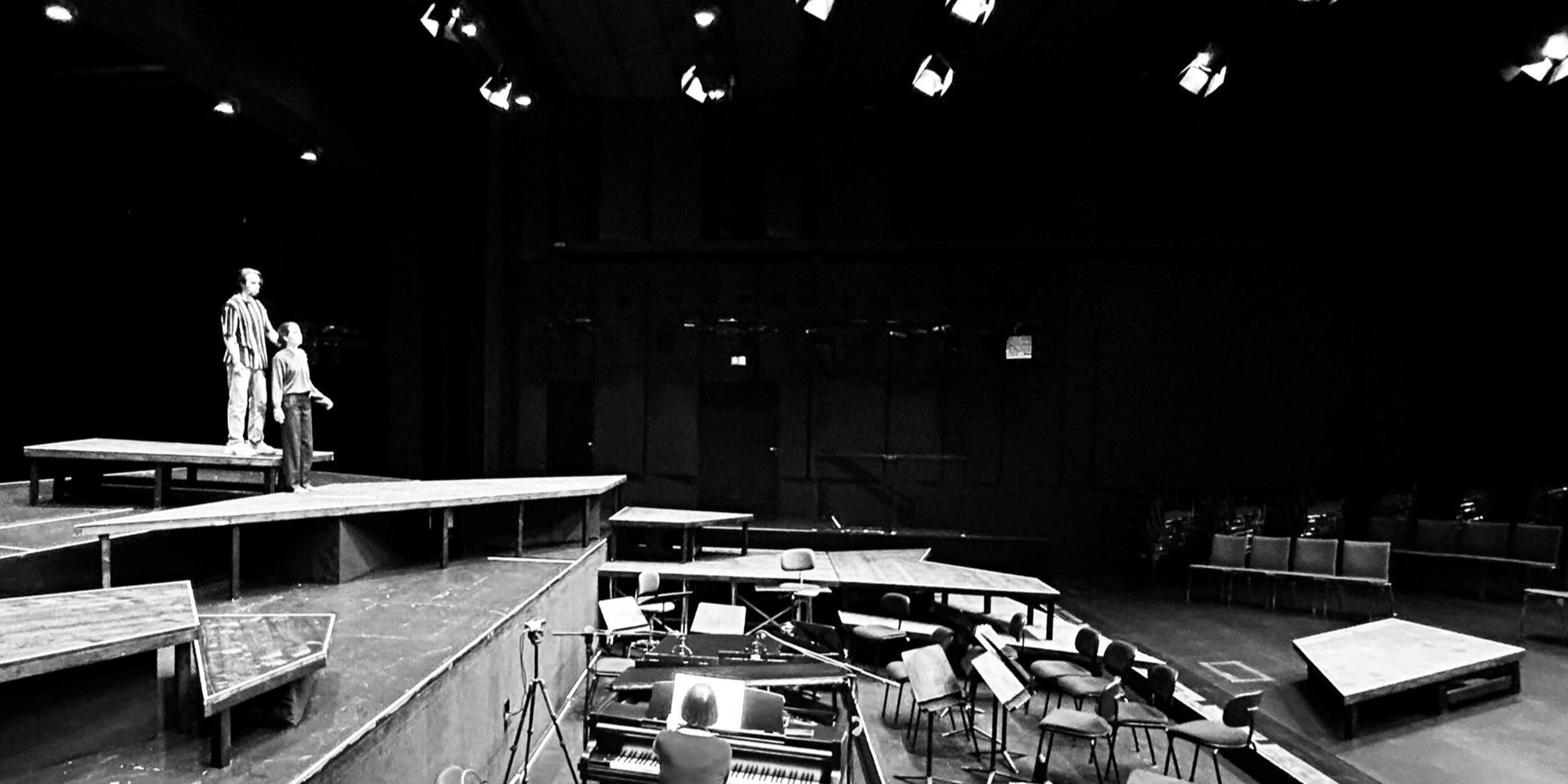The eternally young story of Romeo and Juliet

Vincenzo Bellini's highly romantic bel canto opera I Capuleti e i Montecchi celebrates its premiere in the Max Schlereth Saal on 10 December under the direction of Alexander von Pfeil and musical direction of Gernot Sahler. A conversation with maestro Gernot Sahler about Bellini's inventiveness and the challenge of dealing with special stage situations.
10.12.2024 19:00–20:45 Uhr
Why did you choose this opera, which deals with the most famous love story of all time, Romeo and Juliet?
If you look at our most recent productions, we have gone from Henze's Elegy for Young Lovers, an opera from the 20th century, to Mozart's Le nozze di Figaro, a work from the Viennese classical period, and now to the so-called bel canto style, to verismo. The aim of the two to three-year Master's degree programme in Opera and Music Theatre is always to gain experience in as many stylistic periods as possible in order to be optimally prepared for the professional life that immediately follows, and Bellini's opera I Capuleti e i Montecchi is an ideal vocal fit for our class: we can cast all roles very well and every student can develop optimally.
The work will be performed in a reduced orchestral version for 15 musicians, with all the voices being soloists. What special challenges, but also opportunities, does this present for you as a conductor, but also for the orchestra? What effect does the transparent and clear sound have on the singers on stage?
The biggest challenge of a reduced orchestra is to get as close as possible to the original sound. On the other hand, good chamber music transparency is much easier to achieve. For the small to medium size of the Max Schlereth Saal, such an instrumentation is often sufficient, especially if, as in our production, the orchestra pit situation is eliminated in favour of a complete spatial solution.
You've already mentioned it: Together with director Alexander von Pfeil and set designer Laura Trilsam, you have opted for an open, abstract stage space with different levels into which the orchestra is integrated. There will be no conventional orchestra pit/box stage situation, which will also have an acoustic effect. Will this make it easier to work with the singers through greater proximity and direct communication? What additional aspects need to be considered due to the special stage situation?
The audience can be curious: The very talented scenography student Laura Trilsam has developed a new spatial concept for the Max Schlereth Saal: everything dissolves here, the audience and singers will mingle, you sit ‘right in the middle’. The orchestra plays from the centre, sometimes the singers are in front, sometimes behind, sometimes in the orchestra. It has become a real spatial solution and the interaction is chamber music-like. At one moment, the singers are right next to me, then we have almost no contact and we rely on our mutual intuition. It's all very exciting and challenging, but above all it's great fun.
Bellini's melodic inventiveness was fantastic, while at the same time he wrote performance markings for individual notes. How do you deal with this balancing act that the conductor has to overcome between musical flow and precise staging?
I am quoting the music critic and musicologist Guglielmo Barblan here: ‘One could almost say that his (Bellini's) vocal line is the synthesis of a polyphonic idea reduced to a single voice, the fusion of different and sometimes even conflicting emotions, which are completed and summarised in the melodic line alone. In this endeavour, Bellini finds a counterpart only in his contemporaries Chopin.’ One could also say that through the simplification of the harmonic, contrapuntal and instrumental means, the movement of the emotions and the dramatic meaning of the word is elevated to the simple formality of the line. The melody thus ‘floats in a new magic of a lyrical world.’
The composer gave the role of Romeo to a mezzo-soprano, so the lovers are portrayed by two women. What special appeal does this have from a musical point of view?
The reason for this is very simple: in 1830, Bellini was confronted with an already committed ensemble of singers at the Teatro La Fenice in Venice, which included a great soprano and an equally brilliant mezzo-soprano. All the other voice parts were only occupied by moderately talented singers. He had to step in as composer for a cancelled premiere and write a completely new opera within six weeks. An adaptation to the existing circumstances was therefore necessary. In addition, of course, there is the inherent attraction of a ‘trouser role’, of transferring the feminine sensibility of a woman to a man. This has always won the hearts of audiences. The identical vocal ranges make it possible to merge and connect, even to the point of dissolving into a single common vocal line, which is equivalent to the emotional states of lovers.
Alongside great arias and scenes in which both Romeo and Giulietta lament their inner turmoil and emotional hopelessness, the plot is repeatedly - deliberately - pushed into the background. Without wanting to take anything away from the director: How much weight do you give to the protagonists' introspection?
The eternally young story of Romeo and Juliet (which, by the way, is perfectly suited to a young ensemble) is quickly told. Much more important are the inner states and psychological developments, which are often revealed in minute-long atmospheres, which in turn are optimally realised by the Bellinian melodic lines described above. The introspection is therefore the actual central component of the opera.
